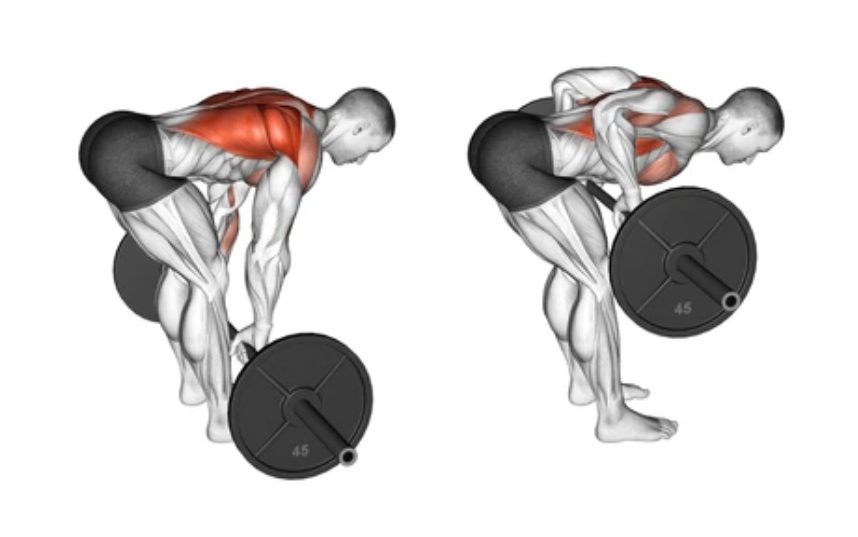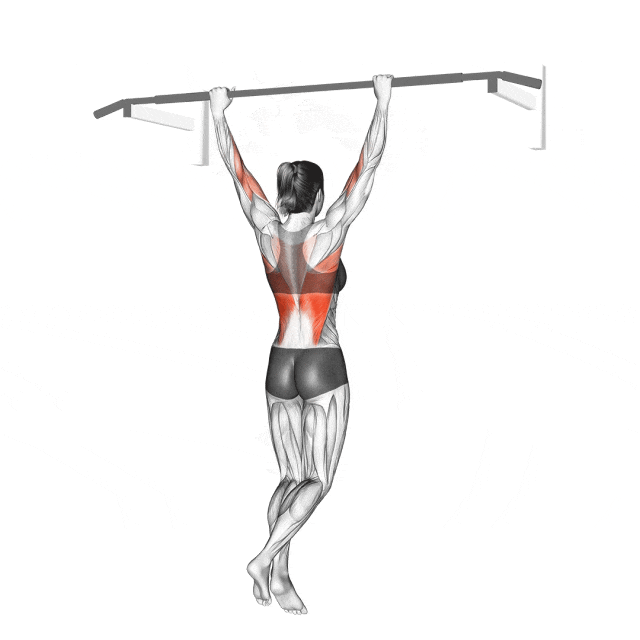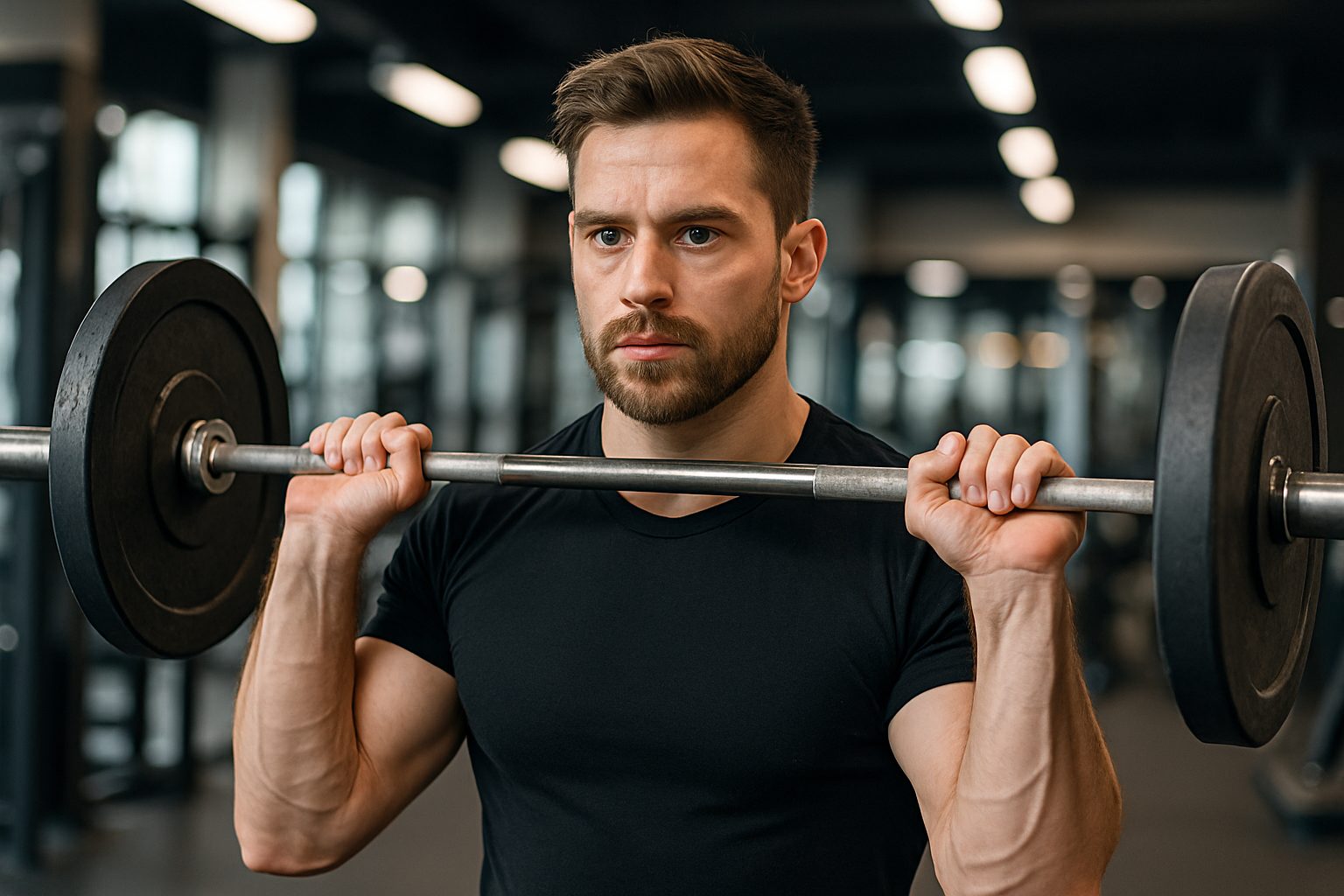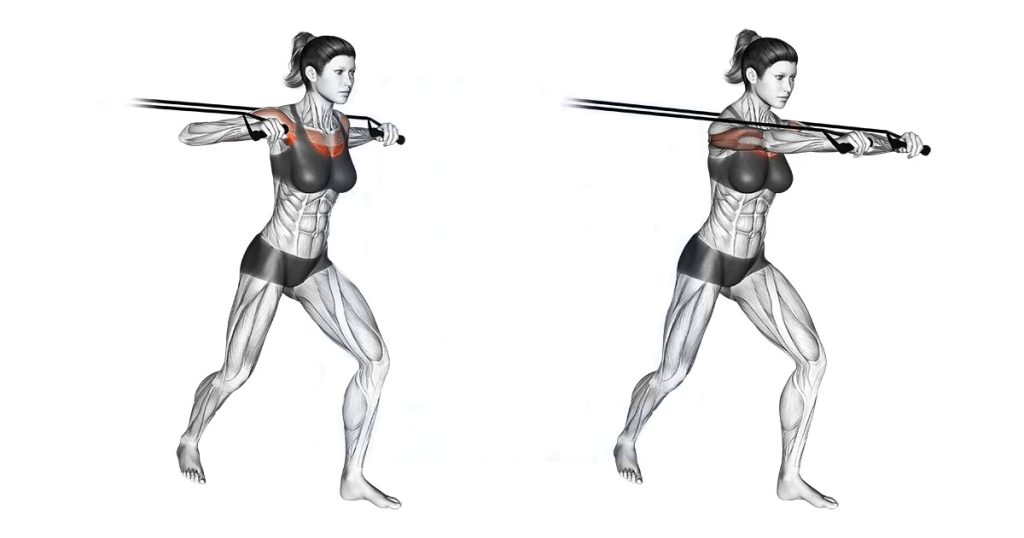The best 3 back exercises aren’t just random picks — they’re the most effective moves for building serious muscle, strength, and definition across your entire back.
Each one targets a different part of your back — from your lats and traps to your lower spinal muscles. Together, they help you lift stronger, pull better, and grow real back size.
If you want a strong, well-built back — this is where to begin:
- Bent Over Barbell Rows
- Pull-Ups
- Deadlifts
Bent Over Barbell Rows

Bent Over Barbell Rows are one of the best 3 back exercises for adding real thickness to your upper and middle back. They hit your lats, traps, and rear delts in one hard pull — and help you build serious pulling strength.
Why It’s a Must
- It’s the key movement for building real back thickness — more effective than most machine-based exercises.
- It trains multiple joints and muscle groups at once, making it the foundation of upper-body pulling strength.
- Many strength athletes rely on it as a primary back builder because it delivers clear, transferable results.
How to Do It
- Stand with feet shoulder-width apart, barbell on the ground in front.
- Hinge at your hips, keeping your back flat and chest up.
- Grip the bar with both hands and row it toward your lower ribs.
- Pause briefly, then lower the bar slowly with control.
- Do 3–4 sets of 8–12 reps, focusing on clean form and full range of motion.
Pro Tips
- Don’t lift your head or round your back. Keep your core tight the entire time.
- Squeeze your shoulder blades at the top of each rep.
- Start with moderate weight to perfect form before going heavier.
If your back needs thickness and real pulling strength, this is the move that gets it done. It builds control, power, and visible results.
Pull-Ups

Pull-Ups are one of the most effective ways to build back width and create that classic V-shaped taper. They directly target your lats and upper back while demanding full-body control and strength.
Why It’s a Must
- It’s the most effective bodyweight exercise for targeting the lats and building upper-back size.
- It builds relative strength — teaching you how to control your own body under load.
- Unlike many machine exercises, pull-ups demand full-body coordination and deliver real results.
How to Do It
- Grab a pull-up bar with a grip slightly wider than shoulder width.
- Hang with arms fully extended and core tight.
- Pull yourself up until your chin clears the bar.
- Lower slowly until your arms are straight, then repeat.
- Do 3–4 sets of as many reps as you can, maintaining strict form.
Pro Tips
- Avoid swinging or using momentum — keep the movement strict.
- Pull your elbows down and back to engage the lats properly.
- Use resistance bands or an assisted pull-up machine if you can’t complete full reps yet.
Pull-Ups are tough, but worth it. They shape your back, build functional strength, and prove you can move your own body with power and control.
Deadlifts

Deadlifts are more than just a strength move — they’re a full-body test. And yes, your back is doing a lot of the heavy lifting. This is where raw power meets real muscle-building.
Why It’s a Must
- It targets your entire posterior chain, especially the spinal erectors, traps, and lats.
- It improves both pulling strength and posture by training your body to move under heavy load.
- Among the best 3 back exercises, it stands out for total-body development and unmatched carryover to real-world strength.
How to Do It
- Stand with your feet hip-width apart, barbell over mid-foot.
- Hinge at the hips, grip the bar just outside your knees, and brace your core.
- Drive through the floor to stand tall, keeping the bar close to your body.
- Lower the bar slowly back to the ground under control.
- Do 3–5 sets of 5–8 reps, focusing on proper form and full-body tension.
Pro Tips
- Keep the bar in contact with your legs throughout the lift.
- Don’t lean back at the top — just stand straight.
- Nail your form with moderate weight before going heavy.
Deadlifts build strength from top to bottom. They teach control, demand power, and reward consistency — making them a non-negotiable if you’re serious about your back.
If you want a strong, well-developed back, these three exercises are where you start — and where you keep coming back. Each one targets a different part of your back, and together, they cover everything from width to thickness to total-body strength. They’re also a perfect match with the kind of back strengthening equipment found in serious training environments — no fluff, just function.

I’m Riley Williams, an editor for Leadman Fitness where we engineer bespoke strength equipment tailored to unique training goals. My expertise lies in home gym solutions, mobility tools, and injury-prevention gear, shaped by 8 years as a strength coach and rehab specialist. I know how subtle design flaws—a knurling pattern that blisters hands or a bolt that loosens mid-session—can derail progress.
I bridge the gap between our production team and everyday athletes: surveying garage gym owners, analyzing wear patterns on returned gear, and pressure-testing prototypes with physical therapists. My content cuts through marketing hype, focusing on practical fixes—whether you’re retrofitting a basement gym or sourcing commercial equipment that survives 24/7 use. If it’s in our catalog, I’ve stress-tested it myself.
